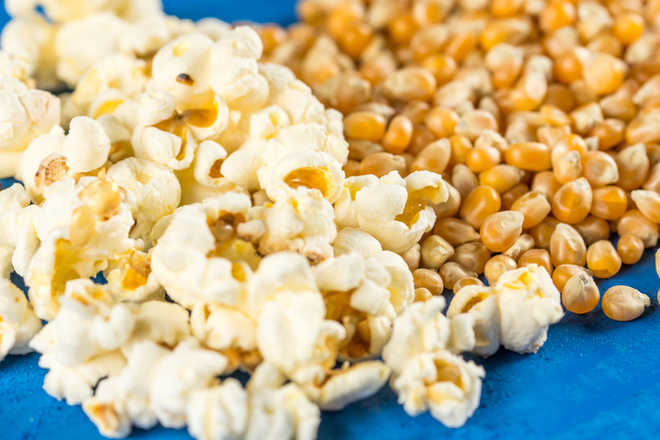Popcorn-Powered Robots

Powering robots from popcorn sounds like a science-fiction novel, however, Cornell University researchers have done just that. In a paper titled "Popcorn-Driven Robotic Actuators,” co-authored by Steven Ceron, mechanical engineering doctoral student, and Kirstin H. Petersen, assistant professor of electrical and computer engineering, examined how popcorn can power simple robotic machinery.
The paper studied the unique qualities of popcorn that can power inexpensive robotic devices that grip, expand, or change rigidity. "The goal of our lab is to try to make very minimalistic robots which, when deployed in high numbers, can still accomplish great things," said Petersen, who runs Cornell's Collective Embodied Intelligence Lab. "Simple robots are cheap and less prone to failures and wear, so we can have many operating autonomously over a long time. So we are always looking for new and innovative ideas that will permit us to have more functionalities for less, and popcorn is one of those."

The research study was the first to consider powering robots using popcorn, which is economically friendly, biodegradable and of course, edible. The popcorn kernels can expand at a really high rate and exert force and motion when heated which could potentially power miniature jumping robots. This is particularly unique since edible devices could be ingested for medical procedures. In the case of popcorn robotic machinery, there is no need for air pumps or compressors since the mixture of hard, un-popped granules and lighter popped corn could replace “fluids” in soft robots. "Pumps and compressors tend to be more expensive, and they add a lot of weight and expense to your robot," explains Ceron, the study’s lead author. "With popcorn, in some of the demonstrations that we showed, you just need to apply the voltage to get the kernels to pop, so it would take all the bulky and expensive parts out of the robots."
The research was presented at the IEEE International Conference on Robotics and Automation. The study hopes to inspire researchers to dive deep into other possibilities of nontraditional materials. "Robotics is really good at embracing new ideas, and we can be super creative about what we use to generate multifunctional properties," says Kristen Petersen. "In the end, we come up with very simple solutions to fairly complex problems. We don't always have to look for high-tech solutions. Sometimes the answer is right in front of us."
Source: Cornell University, Science Daily








